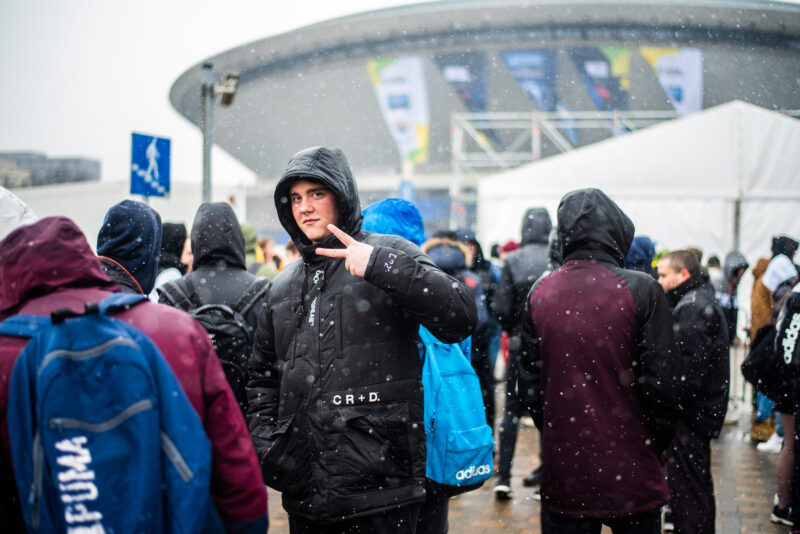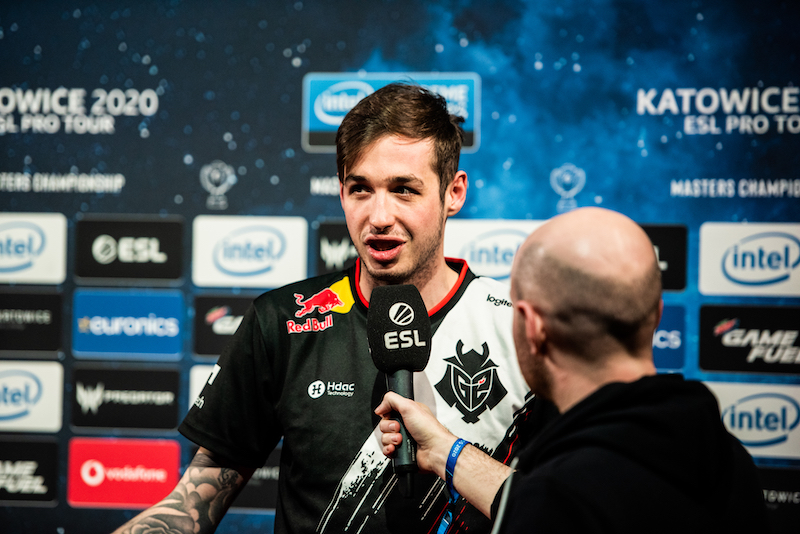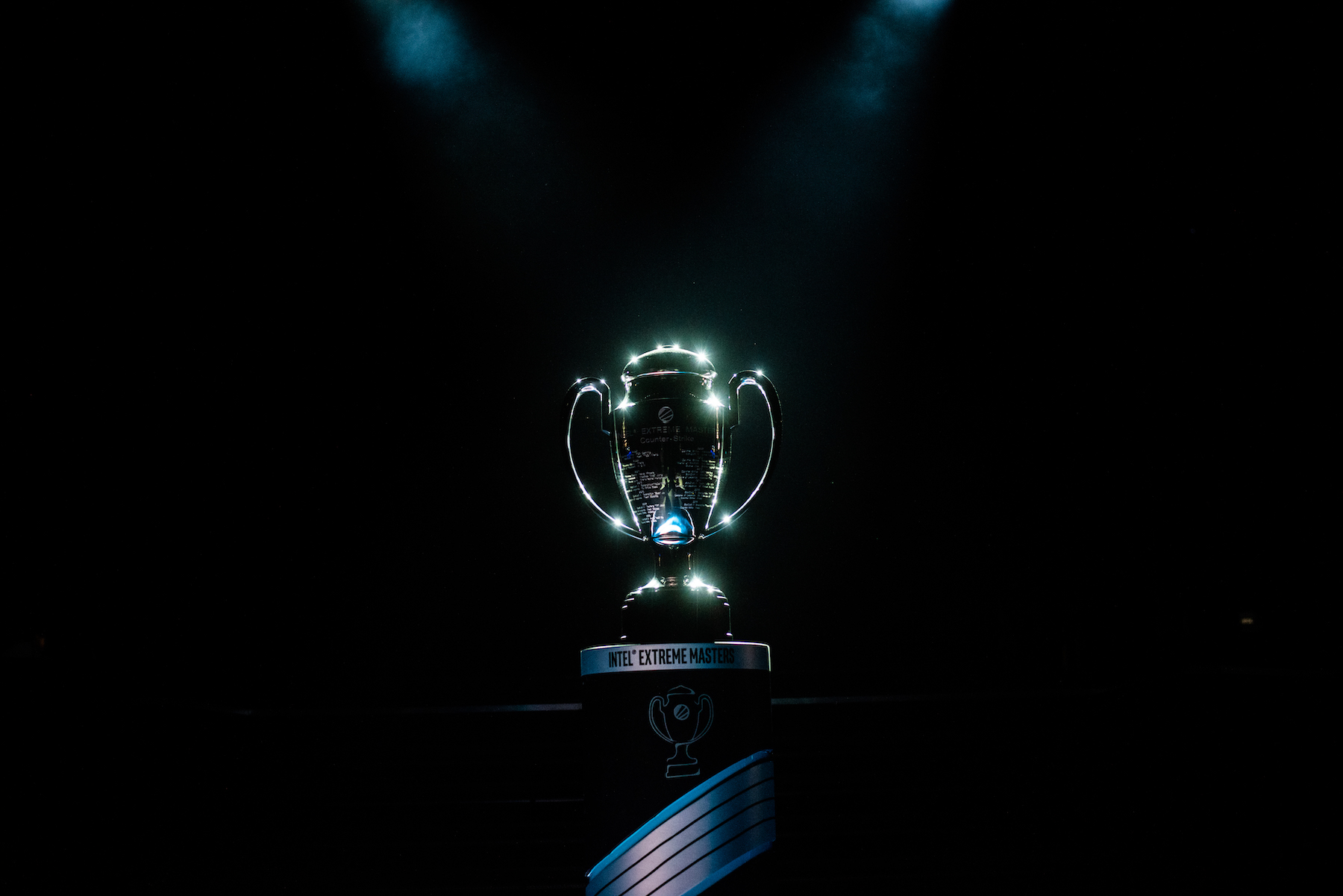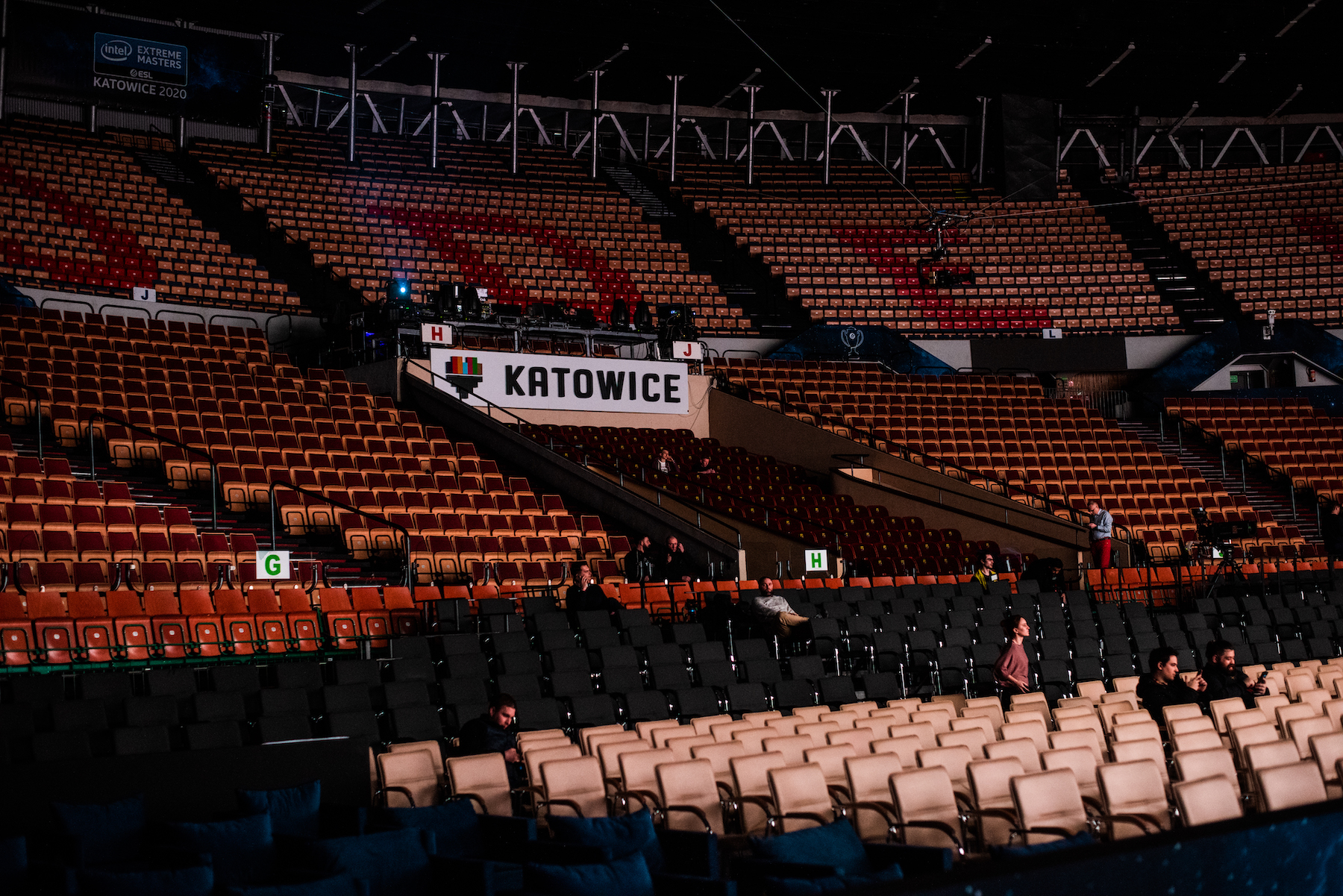I love Counter-Strike. It’s a passion I hold dear to my heart – and I’m far from the only one. Around the world, the first-person shooter has millions of devout fans and players.
But Counter-Strike isn’t confined to dimly lit bedrooms – it’s the locus of an international community of Esports fans and players. Katowice, in Poland, is at its heart. Fans from all over the planet travel there each year, regular as a pilgrimage, to soak up the culmination of the Intel Extreme Masters (IEM) season. In football terms, it’s like the Champions League final.
Katowice, to an Esports fan, is synonymous with Counter-Strike. The 10,000 tickets sell out in minutes each year, with those present participating in something unique: live sport, played on monitors by headset-wearing athletes.
In late February, I’m among the lucky ones – I have one of the golden tickets to the event. I’m going to be one of the fans who help create the rarified aura that surrounds the event, and I’m there with a press pass.
Until hours before, when an email hits my inbox that changes everything. Due to fears about the spread of the coronavirus, the email says, no fans will be admitted into the 11,500-seat Spodek Arena where the tournament is scheduled to take place.
Counter-Strike is really not that hard to understand – even though it is really hard to master
Despair and misery spread as fast as any virus. The Spodek, it seems, will be empty, and Counter-Strike’s most hotly anticipated and glamorous event will take place in silence.
Fans are left at a loss: what to do now?
People from all over the world have travelled to be here and the voices in the crowd outside of the arena, huddled together and exposed to the February snow, are wide ranging. Polish, Russian, English, Portuguese and a litany of other dialects and accents are united in disappointment. A fan from Russia, Denis, tells me: “I have the hotel for three days and I’m leaving on Monday, but I still have no idea what I will do.”
His situation isn’t uncommon among those who’ve travelled. “It is really frustrating”, he says. “I took a week off from my job, a week off university and the week was supposed to be about this. I don’t know what I will do.”
It’s hard to overstate the significance of the tournament’s cancellation for fans like Denis. The Spodek arena is as iconic to those who follow the game of Counter-Strike as the Maracana is to football fans, Madison Square Garden is to basketball fans or Croke Park is to GAA fans. For the most dedicated, the journey to attend IEM Katowice is sacred – a trip to a nondescript industrial town in southern Poland to witness some of the most memorable moments in Counter-Strike history.

The voices in the crowd outside of the arena, huddled together and exposed to the February snow, are wide ranging.
Esports is a term that many people who have grown up in the age of the internet may have heard, but remains an untapped mystery to most. It stands for electronic sports and has become the unofficial official moniker for professional gaming. Competitive video games featuring world-class players who have mastered the intricacies of their chosen title have been growing year on year for the past decade.
To the uninitiated, games like Fifa, Dota 2, and Fortnite might ring more of a bell, but Counter-Strike is among Esports’ most beloved games. It’s a competitive shooter with digestible gameplay that makes it more of an easy transition to a spectator sport than many of its competitors.
Counter-Strike has a simple premise: five terrorists set out to plant a bomb to blow up one of two “sites” on one of the seven maps that are played within the professional circuit. Their opponents are a group of five counter-terrorists who are tasked with defending these “sites” by eliminating the terrorists or by defusing the bomb once it is planted.
The simplicity of the concept and the digestibility of the gameplay is a big reason why Counter-Strike has lasted the two decades since its release – and why it’s well on its way to becoming the first competitive video game to achieve mainstream recognition across the world. As Kenny Schrub – one of the most talented and beloved Counter-Strike players of all time – tells me, Counter-Strike is “really not that hard to understand – even though it is really hard to master”.
The team were really looking forward to playing in this arena. It is really storied, really mythical. Everybody knows about it
Back in Poland, I make it into the Spodek Arena, with a pass to cover the event. The atmosphere is unnerving. Things are far from normal – the coronavirus has seen to that – but for players and staff, there’s a tournament to compete in, and the demands of competitive gameplay continue despite the eerie silence in the stadium.
Schrub – a legendary French sniper more commonly known by his in-game moniker “KennyS” – tells me his team “actually found out just a couple of minutes after knowing we were through to the semi-finals. We were obviously really happy beating [Team] Liquid, and then instantly we were pretty down – pretty depressed, to be honest”.
You might think Schrub, who’s 24, was an up-and-comer within Counter-Strike. He’s anything but, though – Schrub started playing Counter-Strike at four years old and has more than eight years experience playing the game professionally.
But he’s never seen anything like the events that have unfolded this year due to the virus. Schrub – who plays with G2, a mostly French team based around his prodigious talents – says the team “were really looking forward to playing in this arena. It is really storied, really mythical. Everybody knows about it”. Now, in a silent Spodek, and with his manager keeping a close eye on him (he’s 24 hours away from a semi-final), he tells me about his story with Counter-Strike, and his goals for IEM Katowice.
Schrub is one of the most talented players in the history of Counter-Strike. His peak performance levels in 2015 have never been matched, and he says that “when I started playing a bit more seriously, I knew that I had a career around the corner – because, like, it was pretty much obvious for me because I was dominating everyone”.

Kenny Schrub – more commonly known as “KennyS” – is one of the most prodigiously talented players in the history of Counter-Strike.
Esports, then, is now in a place where – like traditional sports – if you’re good enough, then it’s in someone’s interest to pay you to do what you do.
But G2 are far from favourites to win the competition: despite Schrub’s ability, they’re a side that has inherited the flaws that have constantly plagued the French Counter-Strike scene. Their inconsistency and wild fluctuations in form make them an outfit that’s impossible to predict. This issue has plagued the teams that Schrub has competed for and means he hasn’t achieved the type of consistent success you’d expect from a player of his quality.
Beyond his own team’s performance, Schrub is as well placed as anyone to analyse the ascent of Esports to where we are now: sitting in a giant stadium (which is empty, but not due to a lack of public interest), discussing people playing video games for millions of euros. But Esports are still in their relative infancy, and Schrub laughs heartily when I ask him about the sport. “Oh my God, that’s really complicated. That is the thing of my life, no? Story of my life – explain what I do to people.”
He adds: “It’s also my job to promote CS to the best of my ability, to make sure my game, even when I will be gone and leave my own legacy, keeps growing as it’s important for the new players. So yeah, when you are a big player you have to take full responsibility for the game’s future.”
That is the thing of my life, no? Story of my life – explain what I do to people
I ask him how he thinks people can get a sense of Esports, given that most people still aren’t familiar. “To be honest”, he says, “I would just suggest to sit in a stadium like the Spodek Arena and enjoy the show. And at the end of the day, they might not understand fully what they see but they will understand the power of it”.
It’s hard to disagree with him. But this year, it’s not an option – not in a near-empty stadium, closed off to the public amid the threat of an unprecedented health crisis.
Attending IEM Katowice was always going to be a novel experience. But here – in the majestic yet empty Spodek Arena, watching some of the best Counter-Strike ever played while sipping Pepsi and cheering on my favorite teams – it’s beyond surreal. Around 100 people sit, like me, alone in the vast cathedral. Most are other journalists here to cover the tournament, or staff members for the competing teams. From time to time, though, organisers of the competition or other competing teams would appear from behind the veil of the backstage area. They’d sit up front with us and watch the games on the gargantuan big screens that were now serving less people than the restaurant downstairs.

The Intel Extreme Masters trophy, among the most prestigious accolades in Esports.
The size of the stadium means it’s not exactly conducive to watching the games in these unique circumstances: commentators’ voices and in-game sounds are still blasted over the industrial loudspeakers as if the arena was full to the brim. Stage staff are understanding and sympathetic to the situation, but continue to use the pyrotechnics and other high-budget production details that only add to the atmosphere of self-consciousness in the stadium. It’s a unique, but uncomfortable, atmosphere, and it lingers for the three days that I spend in the Spodek.
I can hear the players competing – making calls, celebrating kills and discussing tactics – just 20 ft away from me. It’s too bizarre to enjoy. With a working grasp of Danish, Ukranian or Swedish, I could probably learn something about how the game is played at the highest level, but sadly, the English-speaking teams that remain aren’t as vocal as their European counterparts.
Cheers or claps from the players – or their coaches, patrolling the area behind their teams – cut right through the arena and echo off the back walls, making an already eerie atmosphere even more uncomfortable.
Journalists – among the lucky few allowed in despite the shutdown – wander the giant complex, but even among them there’s a notably muted feel. The Spodek is built for roaring crowds, but there’s only a tiny number here – a remarkable thought, when you consider there are more than a million concurrent viewers around the world tuning into the games being played.
By the second day, despite the amazing quality of the Counter-Strike on show, the event loses some of its lustre. Even with eventual champion and undisputed MVP Sasha “S1mple” Kostyliev playing the game at a level never before seen and leading his team, “Natus Vincere”, to their first ever win at IEM Katowice, this was not the show that I had travelled halfway across Europe to watch. The world-renowned competition is a shadow of the tournament that I’ve watched religiously for the past five years.

Sitting in the majestic yet empty Spodek Arena, watching some of the best Counter-Strike ever played, is beyond surreal.
It’s not all doom and gloom – watching “Na’Vi” lift the trophy from within touching distance is still an amazing experience. But without the thousands of fans, it feels hollow.
When the confetti drops, and a new champion is crowned in the Mecca of Esports, I rise to my feet and applaud the five brave gladiators who stand before me – warriors who’ve battled through 16 of the most talented Counter-Strike teams in the world. These players have spent thousands upon thousands of hours honing their craft and working at this game for the chance to play in an event of this magnitude.
But as they gather around the Intel Extreme Masters trophy, among the most prestigious accolades in Esports, a stark reality sets in. There is not going to be any roaring crowd. For me, and for the players, the dream – winning IEM Katowice, or attending, and adding to the Spodek roar – has fallen flat.







